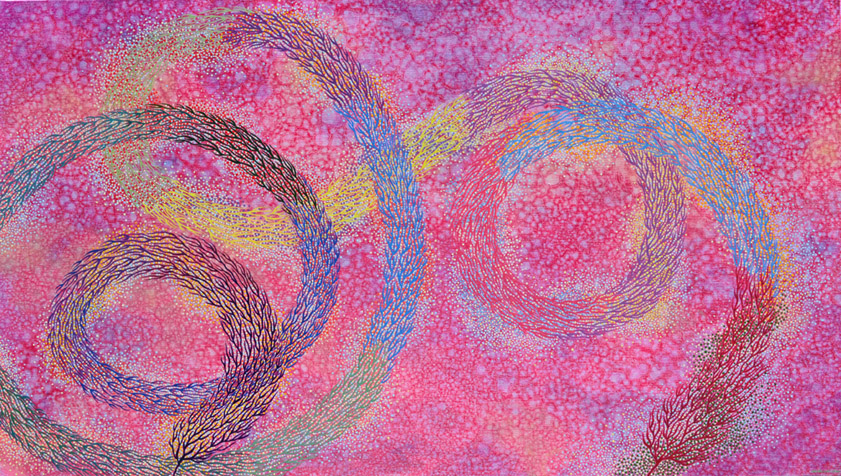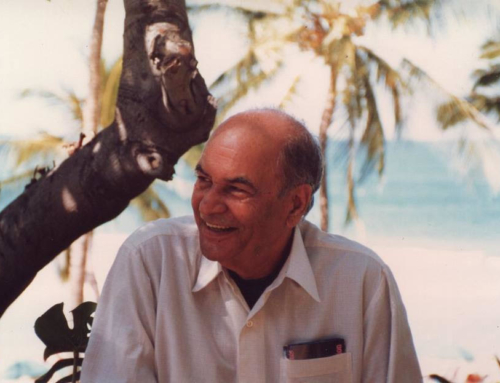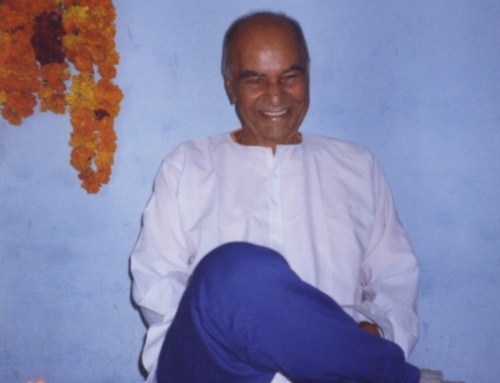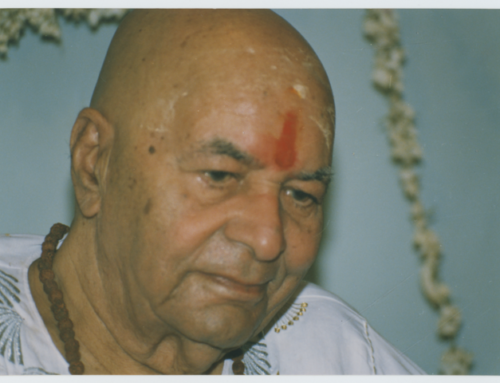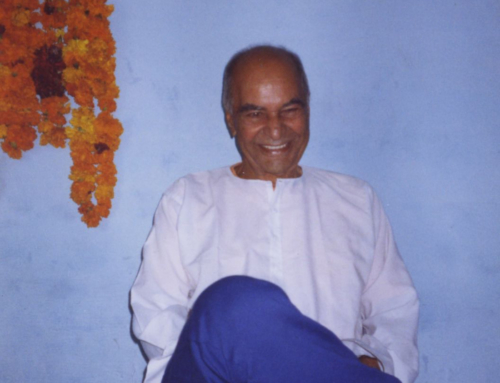This article is an invitation addressed to readers interested in exploring the potentiality of meditative practice. It is also a sharing of personal experiences I have had since meditation first came into my life and professional practice.
I have been working in the field of manual therapy for about twenty years, initially as a physical therapist and later as an osteopath. In the course of my career, I have also had an opportunity to gain experience in scientific, educational, informational, and editorial fields, nationally and internationally. I personally encountered and collaborated side by side with many colleagues, including school directors and researchers, who like me are engaged in various aspects of osteopathy and its evolution; I have listened to talks on a wide range of theories and have seen numerous approaches, techniques, and maneuvers in practice. Until I finally discovered meditation, and soon realized its great importance for us osteopaths, and in general for anyone who uses physical contact in a therapeutic context.
At 19 years old I met Neeraja my meditation teacher, (www.sripapajicenter.net), who got me started on an inner journey. But at that point I was still too young to appreciate what it meant. Nonetheless, precious seeds were planted back then and sprouted years later.
After that first encounter and the brief experiences that followed, life led me through an intensive formative process, followed by a professional career focused on pursuing goals and successes within the world of osteopathy. I found much satisfaction, but never enough to quench my thirst. Finally, fortunately, years later the teacher appeared again in my life.
For about four years now I have been following and practicing the teachings of Neeraja. The method of meditation I learned from her is simple and direct: in the beginning you focus on observing the breath and then, once the mind is calm, on reconnecting with your own source, the awareness of what we really are. It is a training in mental attention that wakens us to what lies beyond mental conditioning and habitual thinking.
With regular practice, you can rise above and beyond mind and let yourself go with clarity into a process of unfolding your life and finding a space where you give free rein to serenity and well-being. But not only that.
The practice of meditation is supported and enhanced by meditation retreats, which give you an opportunity to unplug from daily life and deepen your experience of meditation and its full potential under the expert guidance of the instructor. In fact, having a teacher is fundamental for a successful practice. Meditation triggers an internal process of purification that can stir up memories and processes buried in our consciousness: without a reference point it’s easy to get lost in the intricate labyrinths of the mind.
The effects of that inner journey that I have been able to observe in professional practice are both multiple and extraordinary. For example, in the evaluation phase I noted greater speed and a higher degree of precision in identifying the key areas of blockage, including those pertinent to the autoregulative resources available to the patient in that moment.
Tests aimed at evaluation or differentiation become secondary once you are capable of listening and recognizing the language of the body and its tissues. Even if it seems simple and obvious, it in fact requires profound attentive capacity, such as the maturity to be able to immerse oneself in the quietness and then act directly from there.
In the therapeutic phase, I was surprised to notice how techniques I had learned vanished and gave way to a sort of unfolding, a cathartic process between a trusting patient and an operator who is in a calm state that gives form to the best therapeutic choice in that moment. The maneuvers that arise can have a structural, fascial, cranial, visceral, or biodynamic quality, but what they all have in common is that they emerge without any logical process, without any thoughts or decisions about what to do. Every action springs from presence, the same presence that is experienced in meditative practice, the same presence that is so familiar to us and in which our being is immersed like a drop of water in the ocean.
In that sense, meditation pervades every aspect of my osteopathic practice like a constant leitmotiv. I have seen how at the end of an intense day at work I’m virtually “intact,” as if something prevented me from losing my potential or taking on others’ tension and pain. Obviously, meditative practice is indispensable for removing any possible traces: the impressions unconsciously stored and subliminal transfers. This implies the possibility of cleansing physically and mentally of daily occurrences, and shielding ourselves from direct or indirect influences that can interfere with our state of well-being.
Another benefit that meditation has brought into my professional practice is the possibility of having access to an infinite spaciousness, as if my field of attention were liberated from the mental interferences arising from the habit of judging and overwriting whatever was really happening. Once the flow of thoughts has eased, I find myself in a kind of “free space” from which I can engage in every phase of interaction with the client: from the first contact to the interview, the evaluation, and, finally, the treatment. This makes it much easier and far more natural for me to enter into empathy with every aspect of the client’s being, establishing a state of “resonance” with the person and his or her condition.
It’s not by chance that in 2000 Sackett and his colleagues underscored the importance of empathic listening, recognizing its inestimable value, in particular when taking the client’s history since it forms the basis of the entire remainder of the clinical decision-making process. The authors suggested that the operator can establish and reinforce the empathic relationship to create the ideal ground for gathering information – not only clinical, but also relative to the patient’s life, experiences, sufferings, and hopes. To that end, they recommended an approach focused on listening and on assertiveness, expressed through a series of specific strategies, such as formulating open questions to start the discussion, giving the client sufficient time to explain in detail the reason for the consultation, asking the patient to describe the related emotions, recognizing and calming anxieties expressed, using empathic comments, and refraining from judging.
But Sackett proposed only a behavioral strategy to contain the operator’s mental tendency to judge in an attempt to establish a presumed emphatic “connection” with the patient. In substance, it is a mental solution to a mental problem.
Meditation, instead, allows us to apply a strategy that is directed at establishing a relationship not of listening, but of being listening which is quite different. It eradicates the “problem” at the root, bringing us back to where we always are: here and now, without any mental interference. Meditation bring about qualities that we can tap into throughout our working day, from lucidity and clarity to vision, precision, and strength. This allows us settle into an inner state of “perceptive” silence in relation to the environment and surrounding events; a quiet presence that knows what to do, what to say, what to touch, where to start from, and when to end. It is not triggered by a chain of logical reasoning or even a decision-making process. Instead, it arises from what is always here, right where we are, every time we detach from mental and sensory impressions.
In conclusion, my intention is to indicate the potential that lies within the practice of meditation for everyone who has chosen the mission of promoting healing and well-being through intention and through therapeutic touch. I am referring to the capacity that meditation offers to alleviate, if not eliminate, our incessant mental noise; to its benefits on the level of both the body and mind (https://www.sripapajicenter.net/The Physiological Effects and Clinical Benefits of Meditation. by Dr. Paolo Tozzi). Finally its transformative capacity in the various contexts of our lives.
We all know that the osteopathic approach needs to transcend the biological level of sensory modalities and neural transmitters, of the sensation and perception of pain, comprehending interactions of the body, mind, spirit, and environment, in order to move toward an understanding of the uniqueness of each patient (Gatchel and Maddrey, 2004).
It’s not by chance that McLaren in 2010 proposed the need to overcome biomedical reductionism – the tendency to interpret every mental and emotional process exclusively as a biochemical phenomenon – by means of a biocognitive model that better reflects the holistic philosophy and practice behind osteopathic medicine in that it is based on the natural interaction and reciprocal influence between the body and mind. But beyond overcoming medical reductionism, our profession is ready for another qualitative leap in order to continue to stand out among the peaks of manual medicine. Meditation offers the necessary momentum to transform what is at risk of being repetitive into something natural and spontaneous.
My hope is that my experiences will inspire you, dear readers and colleagues, to personally explore how meditation can be an increasingly effective instrument in the service of medicine.
The truth is that we are unlimited potential – intelligent and aware – that transcends tests and techniques. There is a wellspring that each of us can access and tap into any given moment, through which we can unleash healing processes with infinite potential. Meditation is a key that grants us that access, and as Neeraja always reminds us, “it is the current that knows the way.”
Under the guidance of my teacher Neeraja, the founder of the Sri Papaji Center, this is the path I happily follow.
Translated by Sri Papaji Center
References
Gatchel, R.J., Maddrey, A.M., 2004. The biopsychosocial perspective of pain. In: Raczynski, J., Leviton, L. (Eds.), Healthcare psychology handbook.Vol II. American Psychological Association Press, Washington, DC.
McLaren, N., 2010. Toward an osteopathic psychiatry: the biocognitive model of mind. J. Am. Osteopath. Assoc. 110(12):725-32.
Sackett, D.L., Straus, S.E., Richardson, W.S., et al. (Eds.), 2000. Evidence-based medicine: how to practice and teach EBM. Churchill Livingstone, London. pp. 1.

